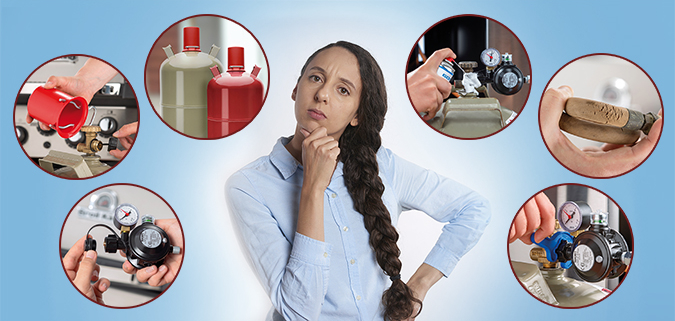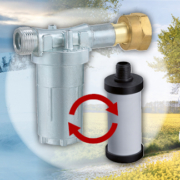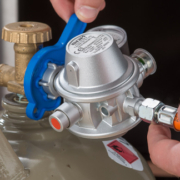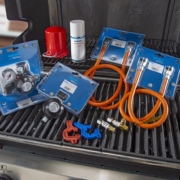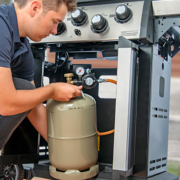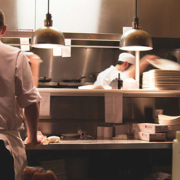How dangerous is the use of LPG in gas cylinders for private persons?
First of all, there are, of course, risks when handling LPG, i.e. propane and butane. However, this is nothing unusual in our daily lives. If you don’t adhere to certain safety rules, electricity, fuel oil or fire are also potentially dangerous media or elements. In this article we show what needs to be taken into account when handling and using gas cylinders so that private use remains safe and convenient – just as it has been for decades!
Explosion of the gas cylinder
There’s no doubt that the biggest nightmare that many people have is the gas cylinder exploding. However, this is practically impossible. Simple, sober logic already makes it clear that although it is nominally a danger, it is nothing to worry about in practice: there are a vast number of LPG cylinders in circulation all through Europe – there are more than ten million of them! If the risks were really that high, we would all hear about a lot more serious accidents. And much more decisive: there would never be that many cylinders in circulation, as it would be simply too dangerous for consumers, companies, authorities and, not least, the legislator!
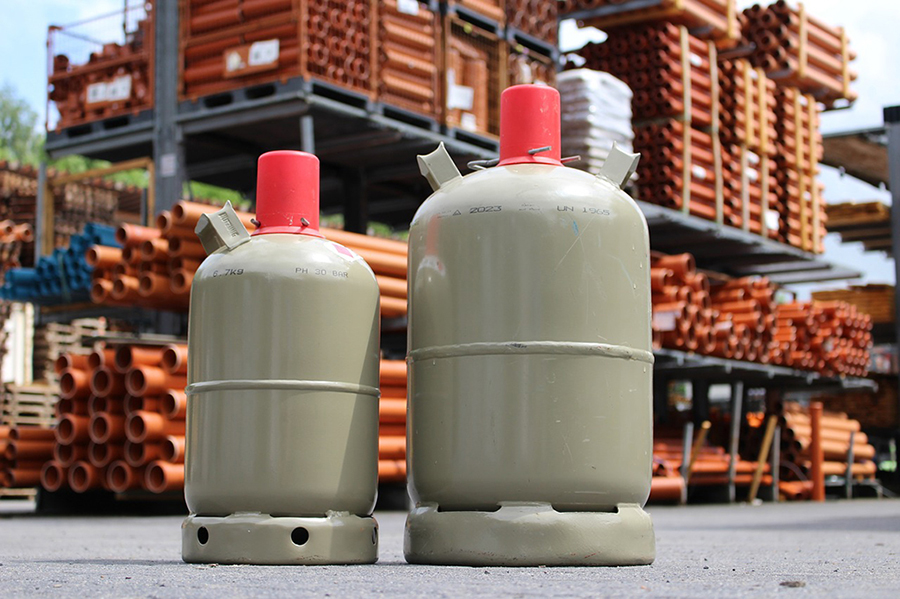
There are countless application possibilities for LPG cylinders around the world. The mobile energy offered by cylinders is also so popular because it is very safe – provided certain rules are observed!
However, this doesn’t mean that accidents don’t happen. If a problem should actually occur, an analysis of the incident is carried out, and this normally states that incorrect handling of the medium was the cause of the accident. And even if something does happen, it practically never plays out as the worst case scenario, namely that the gas cylinder explodes with a loud bang.
When there are accidents, it is usually the case that LPG escapes from the system or from the gas cylinder without the user noticing, this LPG gathers somewhere and then there is a fire or explosion. Why can propane gas or butane gas escape from the system? Sometimes a connection is not correctly tightened, sometimes a gas hose has a leak or the operator makes a careless mistake, or simply isn’t aware.
We have listed things that are particularly important in order to prevent potential dangers. We applied these tips to three scenarios – transport, storage and operation of the gas cylinder.
Transporting the gas cylinder
We have already made a blog post dedicated just to this topic which provides all details. The following is a brief summary of that blog post:
- No “longer” journeys with gas cylinders on board
- Thorough visual inspection of the gas cylinder with regard to damage
- Is there a protective cap?
- Only load the gas cylinder shortly before beginning your journey
- Secure the load!
- Transportation permitted both horizontally (crossways to the direction of travel) and vertically (stability!)
- Ensure sufficient ventilation in the car while driving
- Do not leave the gas cylinder in the car for a longer period of time in direct sunlight, or when it is very hot!
- Unload immediately after transport
- Strictly no smoking!
Storing the gas cylinder
Few people realise that there may also be risks during storage. These can only arise if the operator of the gas cylinders fails to observe certain basic rules and there is also a defect in the gas cylinder, or it is tampered with. We have already made an extra blog post about storage:
If you would like to go into more detail on the subject, please take a look at the article. Here are at least the most important tips for the correct storage of gas cylinders in your home:
- In general, you may have two gas cylinders (including empty ones) in your household, one in operation and one as a reserve (applies to gas cylinders with a filling weight of up to 16 kilograms)
- There may only be one gas cylinder per room
- Never store gas cylinders in rooms under ground level (i.e. cellars)!
- Never store gas cylinders in bedrooms, passages or stairways!
- The surface must be even!
- Make sure to place the gas cylinder at an appropriate distance from heat sources
- Recommendation: always store gas cylinders in rooms which are well ventilated.
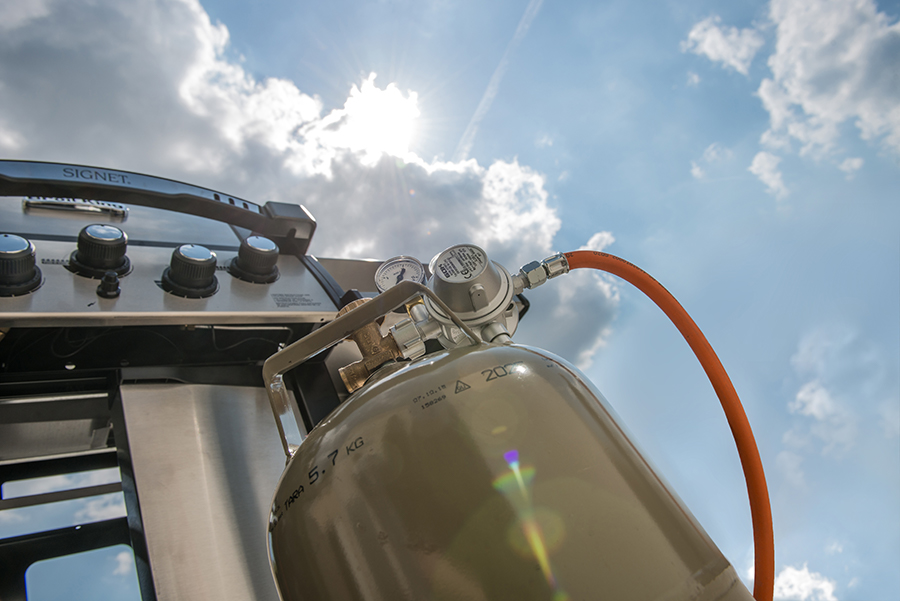
The gas cylinder may also be kept under the blazing sun for a longer period of time. This makes no difference. However, if the operator has the option of storing the gas cylinder somewhere where it is protected, that’s the best thing to do.
Let’s talk about heat: Again and again, the question arises whether it isn’t dangerous to expose the gas cylinder to the blazing sun. We discussed this question on both our blog and YouTube. In a nutshell: no, it is perfectly fine to have a gas cylinder sitting in the blazing sun, even when the outdoor temperature is above 30 degrees. Find out everything else here:
Operating the gas cylinder
There are a few basic rules for the permanent safe operation of gas cylinders and entire LPG systems. If you observe these, you can ensure maximum safety for yourself and your family or guests.
– Assembly and connection
The installation is the foundation for safe operation. Please always read the assembly and operating manual for all components of the LPG system. On the gas cylinder you will find a sticker with the most important tips once more.
It might sound banal, but take sufficient time for assembly. Too many mistakes happen when you rush things. In particular, make sure that the gas hose does not fall below the minimum bending radius specified in the operating manual (no kinks) and that the connections actually fit to each other.
Water pump pliers or pipe wrenches are off-limits in the assembly!For example, the pressure regulator is screwed onto the gas cylinder by hand. It’s best if you have a MiniTool and use it to fix the connection. Clunky tools can cause damage to the connection elements, which in turn leads to a leak sooner or later.
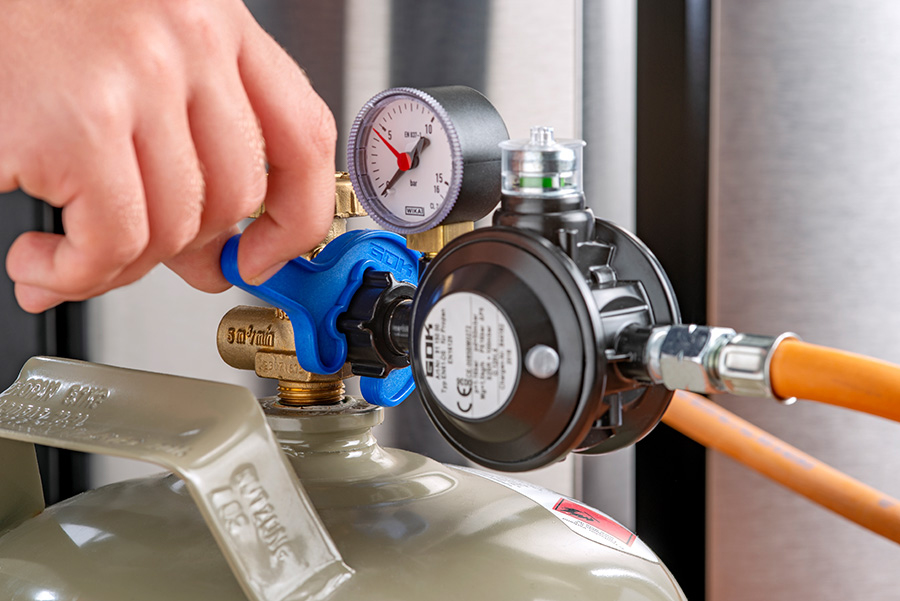
If you want to be really safe, check the connections regularly, for example, at the pressure reducer and gas hose, or the pressure reducer and gas cylinder.This protects you from even minimal leaks.
– Preliminary check (of the components)
After proper assembly, please take a final look at the components. If you notice cracks or very brittle points in the hose or damaged spots on pressure reducers or connection elements, do not put the system into operation at all. Have the suspicious components inspected by a specialist or buy a replacement directly.
– Replacement periods
Always observe the specified replacement periods for wear parts such as the pressure reducer or hose. For private use, the period is ten years from the year of manufacture of the component.
– Components of the LPG system
The heart of the LPG system is always the pressure reducer, also known as a pressure regulator. We, of course, recommend that you focus on high quality when purchasing components. This ensures the long-term safety of the unit – in combination with the tips given here.
Besides the pressure reducer, other components for the LPG system can be, for example: gas hose, shut-off or changeover valve, excess flow device, compression fittings.
Please also ensure that you use the specified safety devices. In this guide (specified for Germany) you will find the right components and safety devices for your application.
– Checking for leaks
If the components are up-to-date and everything is connected correctly, then comes the simple leak check. In this video, we have documented how this can be carried out most easily and quickly:
It should be obvious, but we’ll say it all the same: please never check the leak-tightness of the system with an open flame, for example a lighter, and don’t even think about using a lighter to check whether there is still gas in the gas cylinder.
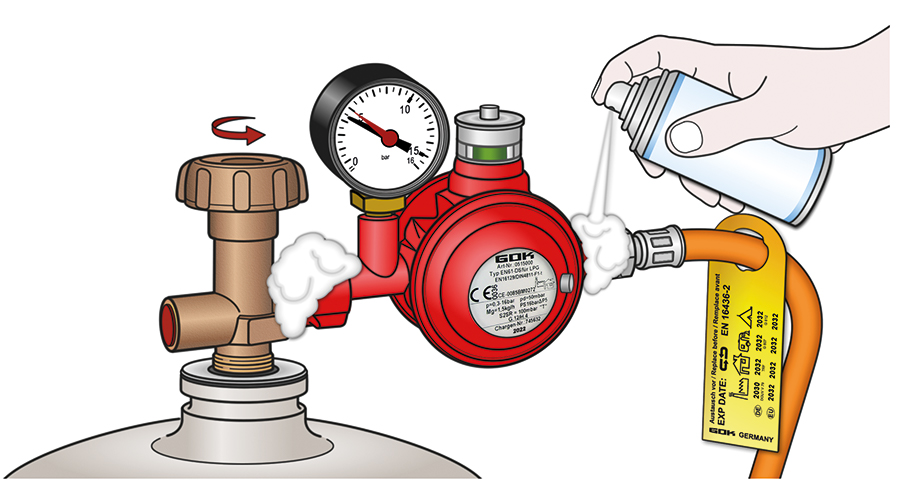
Checking for leaks with leak detector spray, or alternatively with a water-soap mixture, is very simple and the operator can see very quickly whether the system is leak-tight or not.
– Gas cylinder valve
If everything is really OK, you can open the gas cylinder valve. We recommend turning the valve as far as it will go, even though after a little turn there is the well-known hissing sound and the gas is flowing. Why? So you always know in what direction you need to turn to close the gas cylinder!
This sounds banal, of course, but is especially important if it has to be done quickly and things become hectic. For example: You have a grease fire on the gas barbecue. Every second counts. Not everyone can keep a calm head and turn the valve in the right direction at the first attempt. If the valve is turned as far as it can go, you know exactly in which direction it must be turned.
It is not written anywhere explicitly, but we strongly recommend it: close the gas cylinder valve after each use of the gas cylinder, so close it without thinking. Children may play with the gas stove or gas barbecue or you yourself might get caught on the controller. No harm can come from these things if the gas cylinder is closed.
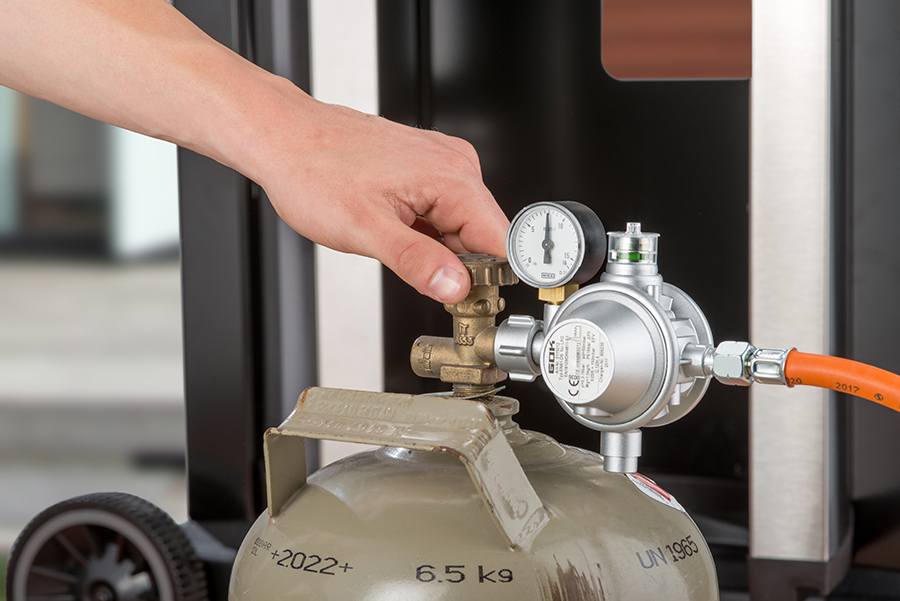
GOK recommends that you always open the gas cylinder valve fully as far as it can go and that you close it again completely after every time you use it.
– Replacing the gas cylinder
Changing an empty gas cylinder for a full one is not a problem in itself if the user observes a certain sequence of steps:
- Close the shut-off valve at the gas equipment
- Close the empty gas cylinder completely
- Loosen the pressure reducer from the gas cylinder
- Screw the sealing nut onto the gas cylinder valve
- Place the protective cap on the gas cylinder valve
- Set the empty gas cylinder to the side
- Remove the protective cap and sealing nut from the gas cylinder valve on the full gas cylinder
- Screw the pressure reducer onto the gas cylinder by hand at first, then tighten using the MiniTool
- Slowly open the gas cylinder valve, then fully as far as it will go
- Check the system for leaks
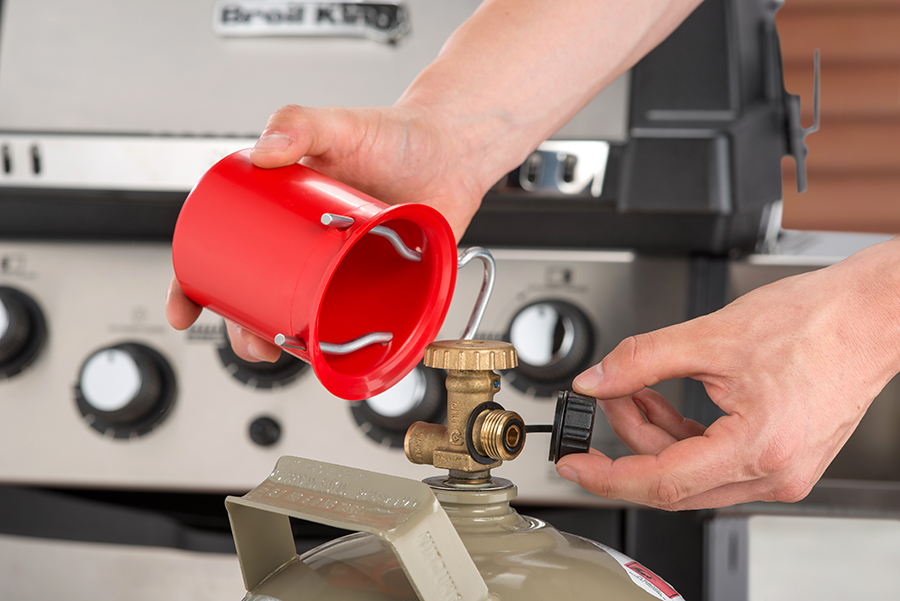
If the gas cylinder is empty, please turn the sealing nut onto the thread and put on the red protective cap.
If the system is leak-tight, you can open the shut-off valve on the gas equipment and operate the gas barbecue, gas heating or gas stove. If you detect a leak, of course you cannot simply go about your business. Find the cause of the leak, eliminate the fault, check again and put the system back into operation if everything is in good working order.
– Inspecting of the LPG system
Both LPG systems indoors and outdoors are subject to a certain inspection obligation. This means that the operator must have the system inspected by a specialist at regular intervals.
This time period is not exactly defined, but in practice it has become common practice to have LPG systems inspected every two years.
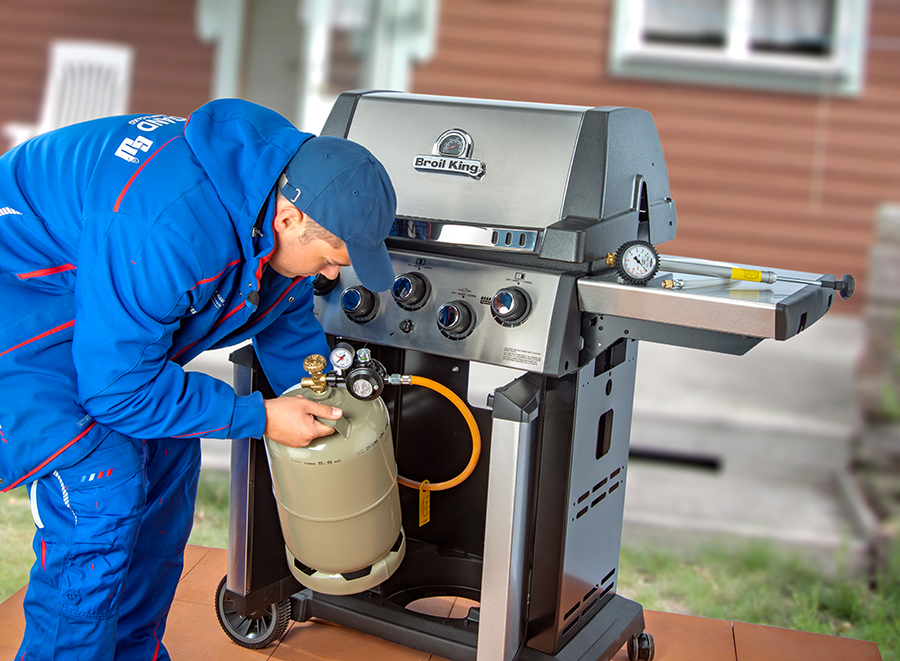
In accordance with the technical rules, it has become common practice that you should have your LPG system inspected by a specialist every two years.
Conclusion
LPG is a medium that you should handle with respect but never with fear – like many other media as well. If you look at the large number of applications of LPG and areas where LPG is used, the number of accidents can be considered extremely low.And as we already mentioned: many accidents can be attributed to handling errors or carelessness. If you have read this article carefully and handle your system responsibly, there is nothing in the way of long-term safe operation.
